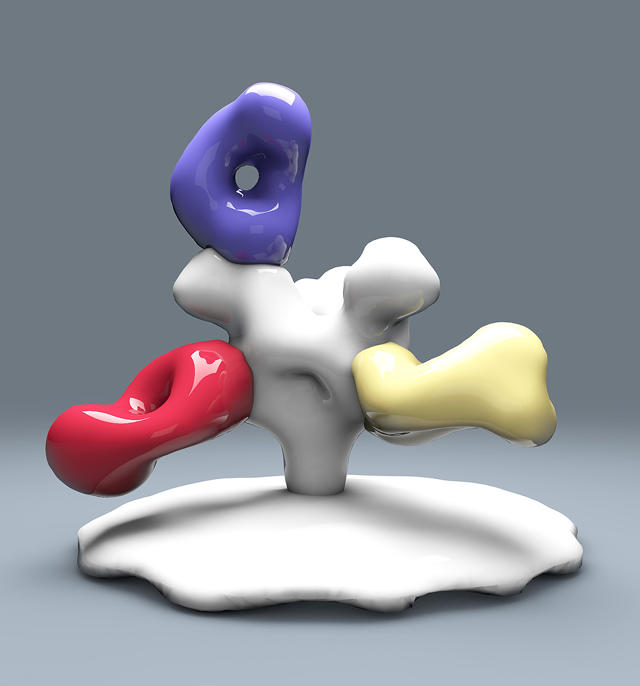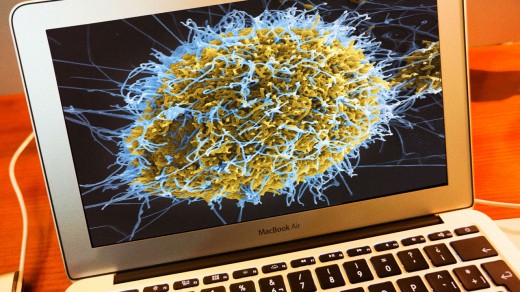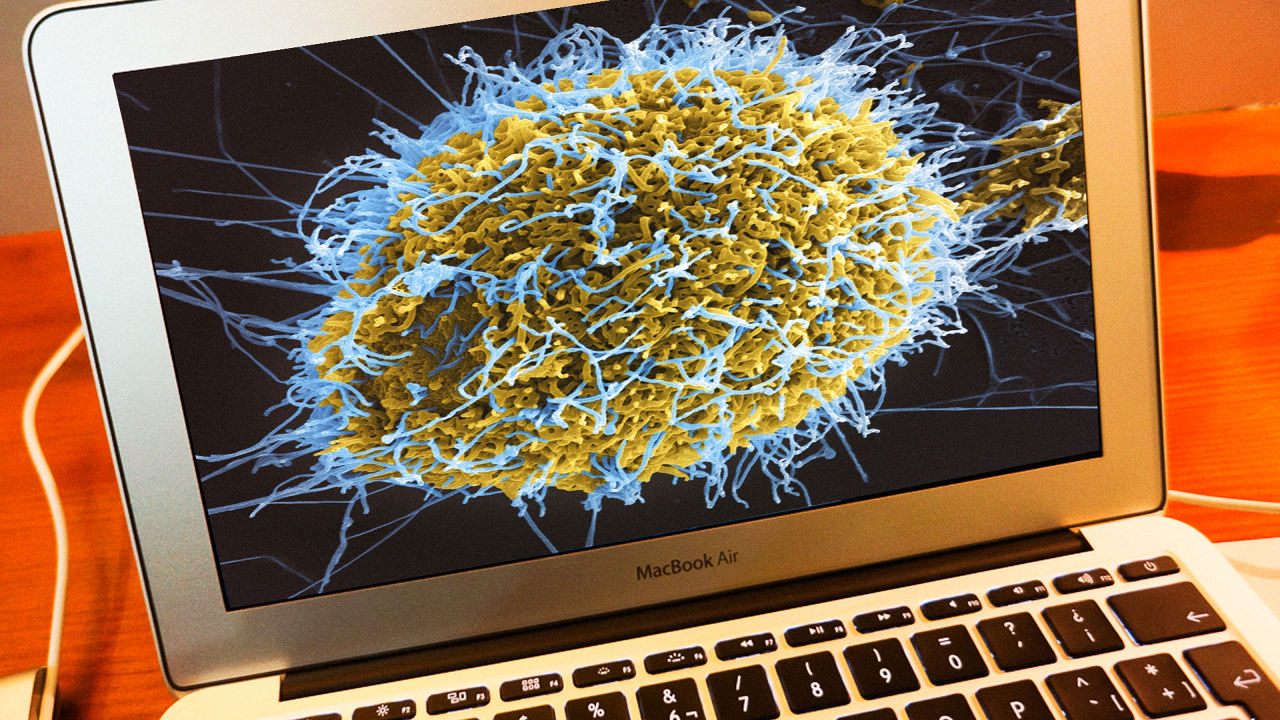the worldwide Supercomputing war On Ebola begins with your pc
obtain this tool and your device’s spare processing power can be donated to gaining knowledge of treatments for the deadly Ebola virus.
January 9, 2015
you most likely depart your computer and make contact with on when you are not the usage of them. And even when you are using your computer, you might be not constantly pushing it to make use of all of its processing power. quite a lot of tasks have exploited that latent doable to seek for aliens, solve unsolved conjectures in arithmetic, and run local weather exchange simulations. Now, your idle gadgets can sign up for the international seek for a remedy for Ebola, without charge of time, cash, or effort to you.
using the “grid computing” undertaking World group Grid, volunteers from all over the world can donate their spare processing power to well being research initiatives of their choice, together with AIDS, most cancers, the human genome, and now Ebola.
“for a similar project called FightAIDS@home, which is run by way of my colleague Dr. Arthur Olson, they may be able to get information in a couple of months that it could have taken them 10 years to assemble in any other case,” says Dr. Erica Ollman Saphire, an epidemiologist on the Scripps analysis Institute, who’s managing World community Grid’s Outsmart Ebola initiative.
Saphire, whose lab at Scripps has been studying Ebola full-time for eleven years, hopes to speed up the development of her analysis in the same approach. the prospective is big: up to now, World neighborhood Grid volunteers—more than 680,000 folks from 80 international locations—have contributed pc energy equal to 1 pc running nonstop for 76,000 years. At any given moment, the grid’s processing energy is similar to one of the most prime five supercomputers in the world.
World group Grid used to be “conceived by way of IBM as a philanthropic provider to the science neighborhood,” says Ari Fishkind, a representative of IBM’s company Citizenship Division. “At an investment value to IBM of tens of tens of millions of dollars, this resource has helped scientists avoid $340 million in supercomputing costs. Many researchers inform us that it in most cases saves them a hundred-200 years in computing time.”
All researchers that use World community Grid make their outcomes public in order that the entire scientific neighborhood can advantage. IBM does now not acquire any rights to the analysis findings.
Saphire’s Lab has already mapped the bodily form of the Ebola virus in 3-d pictures. “we have solved the constructions that give an explanation for what the surface of Ebola virus looks like, the way it attaches to and drives itself into cells, and the way it behaves like a wolf in sheep’s clothing in hiding itself from an immune response,” she says.
the next step is to find an efficient treatment for the virus, which has claimed just about 8,000 lives and continues to ravage West Africa.
“We’re using those buildings to impress an extraordinary global collaboration to make antibody therapeutics against the virus,” Saphire says. “These buildings are the sort of compelling road map for the place you must goal antibodies to make cocktails like ZMapp [an experimental Ebola treatment] that we have now been ready to get each Ebola lab on the planet onto one large collaboration.”

Saphire believes that her lab’s three-D pictures have enabled her to pinpoint a specific piece of the Ebola virus that’s at risk of an antibody therapy. She calls her visible structures of Ebola “enemy reconnaissance.”
“The intention of my lab is to use structural biology to provide an explanation for what the pieces of the virus appear to be and the way they work,” she says. “And in keeping with that structural information we’re ready to determine the place the vulnerable factors of the virus are and where we might hit it with a drug.”
discovering treatments for viruses is slightly like fixing a jigsaw puzzle. As proteins fold in particular ways, they produce specific functions. Antibodies are molecules with their very own specific shapes, which need so as to bond to virus proteins with a purpose to neutralize their functions. the primary goal element of the Ebola virus that Saphire has isolated is the skin protein that is solely liable for infecting human cells. If that surface will also be rendered inert, Ebola will not be able to create new infections in people.
and that’s the reason where World group Grid is available in. The blended processing power of volunteers’ computer systems around the world is now working on that problem. the use of drug candidates from a spread of Ebola labs, computers are fixing complicated equations to determine which medication would possibly bond highest with that that floor protein.
“now we have libraries and libraries of drug candidates,” says Saphire. “we have now a whole bunch of heaps of chemical potentialities that we can reveal with World community Grid. we’re going to computationally display a bunch of molecules and see what may fit in this explicit piece of Ebola virus.”
Dr. Olson’s lab developed a section of software for accumulating the data referred to as AutoDock, which additionally powers FightAIDS@residence. The instrument mathematically analyzes the goal virus, in this case Ebola, towards drug candidates in all imaginable orientations so as to find the very best match.
“in an effort to winnow down which candidates look like they provide us the most hope that we will have to are attempting in real cells in real viruses in our wet lab,” says Saphire. “That saves us a ton of money and time within the moist lab making an attempt to figure out how one can make a drug.”
outcomes from the sector community Grid’s efforts are trickling in. Volunteers have already contributed four and a half of years price of joint computing time in a subject of weeks, however there may be still a long way to go before Saphire’s lab has actionable data.
“In a few months we will have a just right prioritized listing of gear to test within the moist lab,” she says. but of course any new computer systems added to the grid make the process sooner and more accurate, as computers test each and every others’ work robotically.
setting up your laptop to make a contribution to Dr. Saphire’s research is simple to do. First, create an account on World group Grid. Then choose the projects you want to make a contribution to. ultimately, download the sector community Grid software to your windows, Mac, Linux, or Android device and log in together with your World neighborhood Grid account.
in addition, Saphire’s lab can also be at present crowdfunding the earnings for a computer scientist to make heads and tails of the sizeable knowledge equipped with the aid of World group Grid outcomes—already over 1/2 one million person computations. So if that you could donate some cash on high of your unused processing energy, make sure you do this as well.
(141)














